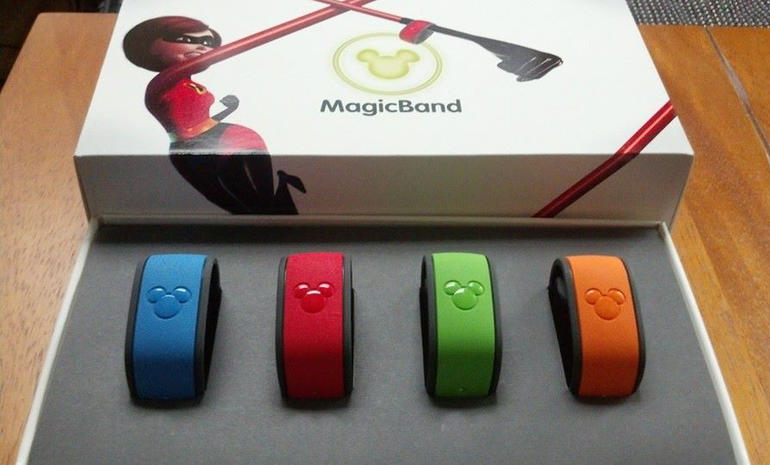Ten examples of IoT and big data working well together

Many of the conversations taking place around the Internet of Things (IoT) are incomplete without a mention of big data. Connected devices, sensors, and algorithms all operate in ways that involve massive amounts of data.
"The success or failure of the Internet of Things hinges on big data," says Brian Hopkins, an analyst with Forrester Research.
As organizations step into IoT, they must understand the symbiotic relationship between it and big data. For IoT deployments to really make an impact, they must provide some sort of useful tool or service, while also collecting relevant data.
Just like with any big-data play, merely collecting the data isn't enough. The data must be processed and analyzed to glean insights, and those insights must drive actionable steps that can improve the business.
Here are ten examples of IoT and big data working well together to provide analysis and insight.
1. UPS
One of the largest shipping companies in the world, UPS, has been using sensor data and big-data analytics to save money, improve efficiency, and lessen its environmental impact. UPS uses sensors on its delivery vehicles to monitor speed, miles per gallon, mileage, number of stops, and engine health.
According to an infographic released by UPS, the sensors capture more than 200 data points for each vehicle in a fleet of more than 80,000 every day. These help the company reduce idling time, fuel consumption, and harmful emissions.
Another way UPS is using big data is through its project ORION, which stands for On-Road Integrated Optimization and Navigation. The tool uses hundreds of millions of address data points, plus other data collected on the deliveries, to optimize delivery routes for efficiency. UPS plans to roll out ORION to all North American routes by 2017.
2. Barcelona, Spain
Barcelona is no stranger to technological innovation. The city hosts the Mobile World Congress technology show every year, but is also becoming a center for innovation itself.
The city offers smart parking meters that operate on city-wide wi-fi, giving residents real-time updates on where to park and allowing them to pay with their phone. Smart bus-stops provide passengers with real-time updates via touch-screen panels, and a city-wide sensor network informs workers and residents about temperature, air quality, noise level, and pedestrian traffic.
To manage all of this, Barcelona built a big-data system on Microsoft Azure to process and analyze the myriad data points it was receiving. With the insights generated by the system, the city can offer better services such as public transportation, plan for events like the La Mercé Festival more efficiently, and better understand the impact of tourism.
3. Virgin Atlantic
Virgin Atlantic has embraced IoT with a slew of connected Boeing 787 aircraft and connected cargo devices. Each plane has multiple internet-connected parts generating a large volume of data.
According to Virgin Atlantic IT director David Bulman, speaking to Computerworld UK, each connected flight can produce more than a half a terabyte of data. While the exact big data program isn't fully realized, the data could be used to predict maintenance requirements or to improve flight and fuel efficiency.
4. John Deere
Big data and the IoT are making waves in big agriculture, and one of the leaders in this area is equipment manufacturer John Deere. The John Deere Field Connect system monitors moisture levels and sends the data over a wireless connection for farmers to see. According to the website, the environmental sensors also measure "air and soil temperature, wind speed, humidity, solar radiation, rainfall and leaf wetness."
The data will help farmers discover when crops are reaching optimum moisture levels. Armed with this information, farmers can make timely irrigation decisions. Trend data can also show how much the change in seasons affects moisture retention.
5. TempuTech
TempuTech is another IoT and big data system that is impacting the agriculture industry. The company offers connected systems that monitor optimal grain storage and potential hazards in systems such as grain elevators.
Hazards such as broken belts or bearings can be monitored. Gain management systems show the moisture and temperature in grain bins, allowing aeration and fan settings to be manually altered to compensate. This data is also sent to farm operators, who can use it to predict moisture and temperature changes based on changes in weather.
6. Disney World MagicBand
Famous for the $1 billion investment it took to get off the ground, Disney World's proprietary MagicBand is a great example of IoT and big data working together. The MagicBand is a wearable, sensor-laden, wristband that vacationers use to do everything from check into their hotel room, buy their lunch, go through the turnstiles at the amusement parks, and reserve a spot for specific attractions.
Wearers use the band to 'check in' at certain posts by tapping it against a receiver, and it tracks their movement via RFID, so Disney collects data on visitor movement throughout the park. Leveraging this data, Disney can accommodate more guests, properly staff rides and attractions, and better regulate inventory at highly-trafficked shops and restaurants.
7. Alex and Ani
Jewelry store chain Alex and Ani have rolled out bluetooth sensors to their stores that can track traffic numbers in their stores and push specialized, or more customized, offers to users' phones as they enter the store.
The company has also partnered with beacon technology company Swirl to complete the deployment. The technology tracks customers movements within the store, similar to a heat map, so the company will be able to better organize and display its products to drive sales.
8. Clermont-Ferrand University Hospital
The Clermont-Ferrand University Hospital in France has deployed an IoT and big data initiative by partnering with Microsoft and Capsule Technologie. The hospital built a proprietary system to collect and organize data that is secure and compliant, and uses connected medical devices to transmit more data to the system.
After the nurses authenticate on a mobile app, they can send patient data directly from their medical devices and tools. The hospital has a fuller, more robust data set and the medical professionals can collect more data in less time, making their jobs easier.
9. King's Hawaiian
IoT and big data have also had a big impact in manufacturing and food production. Food company King's Hawaiian partnered with Rockwell Automation to implement connected machines in their bread production factories that allowed employees to monitor factory performance. The data collected allowed the company to reduce potential downtime of machines and lower maintenance costs.
10. BC Hydro
Headquartered in the Canadian province of British Columbia, BC Hydro is an electric utility providing power to nearly 2 million Canadian residents. In 2011, the company began upgrading its electricity meters to smart meters.
Users can now track their energy use by the hour and see trends in their own usage data. Electricity theft has been greatly reduced and automatic outage detection alerts the company when the power is out in a certain area. Leveraging the data collected, BC Hydro can provide improved service at a lower cost.
